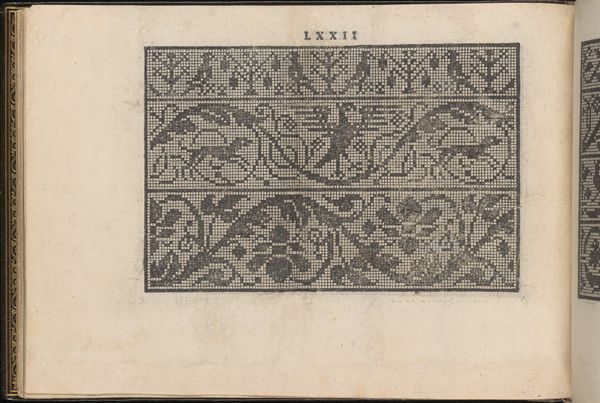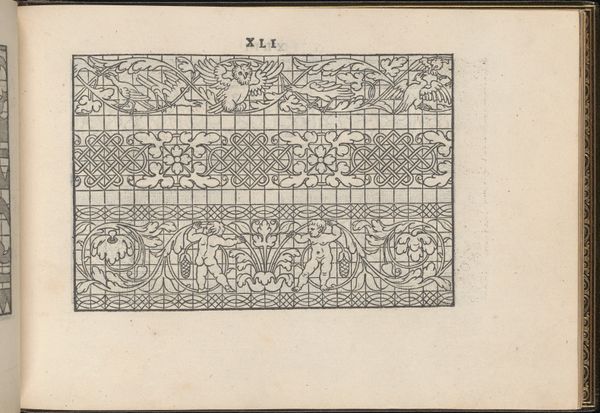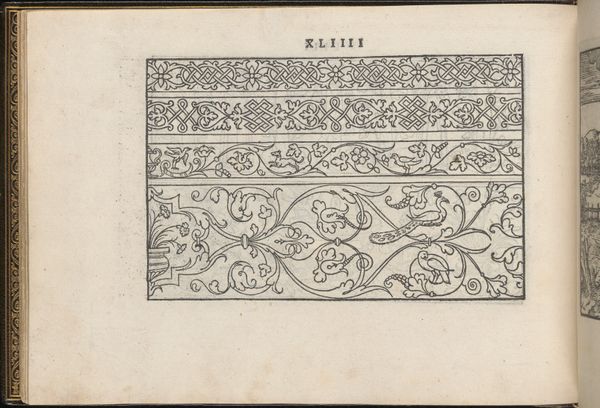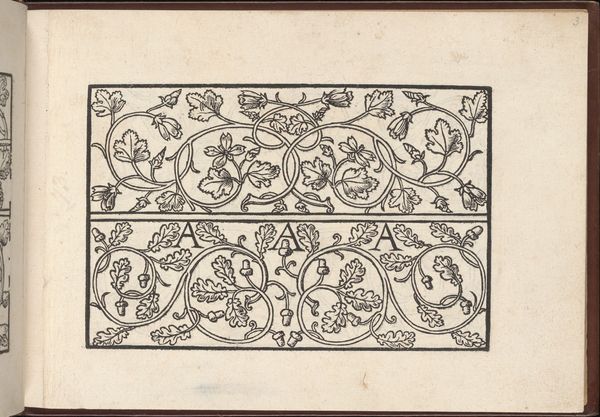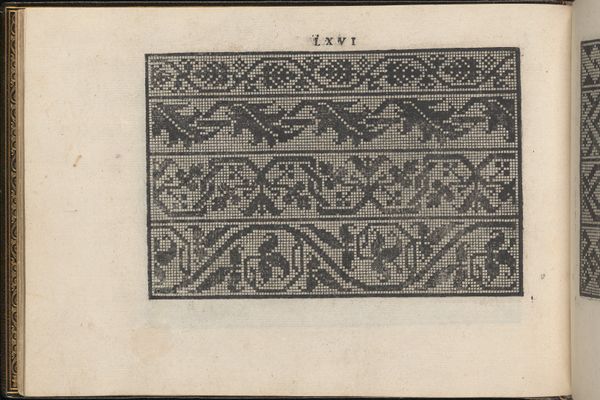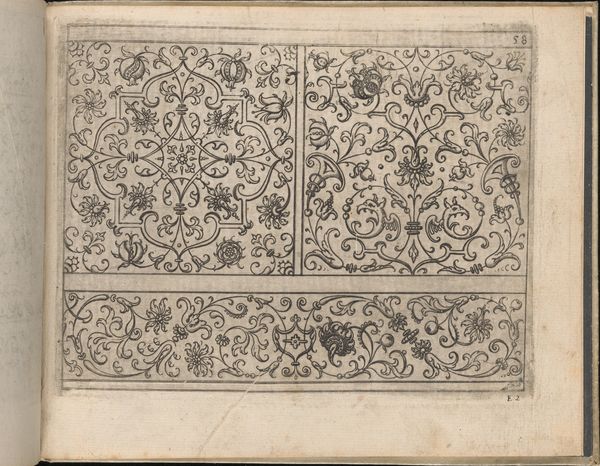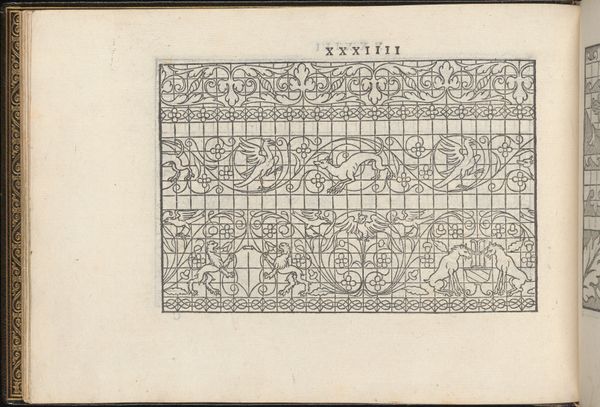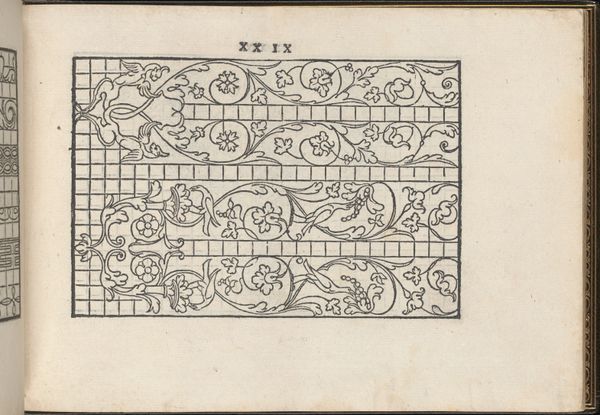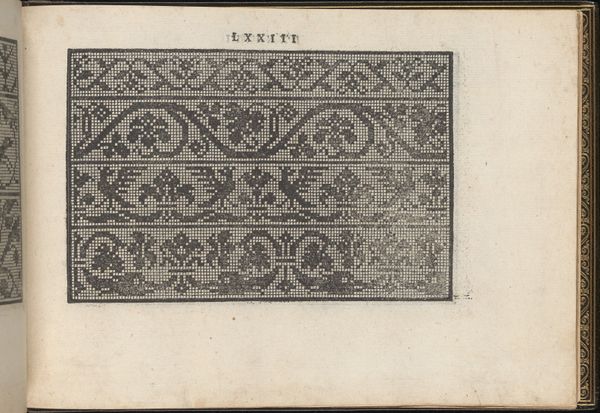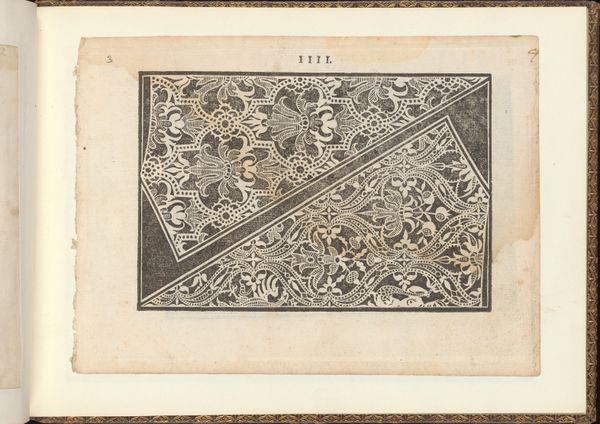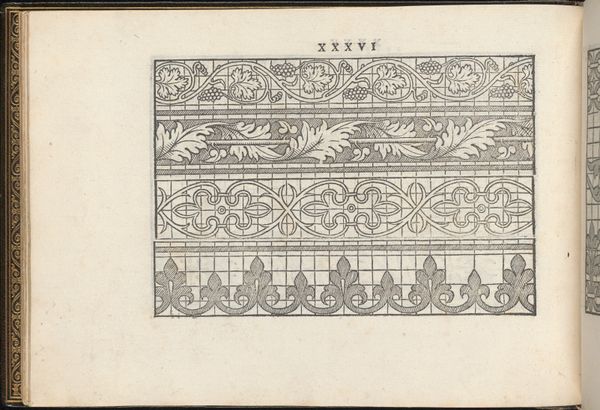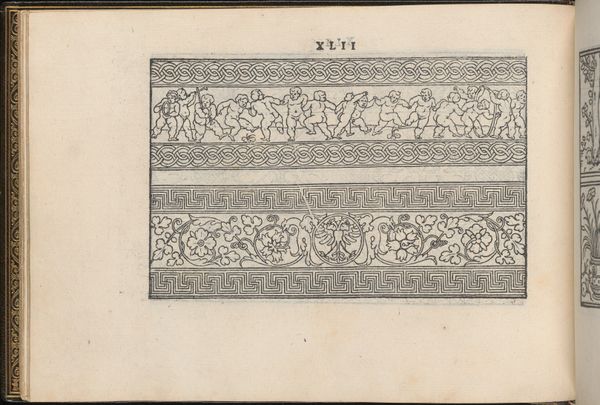
La Vera Perfettione del Disegno di varie sorti di recami, page 28 (verso) 1567
0:00
0:00
drawing, print, ink, engraving
#
drawing
#
pen drawing
#
animal
# print
#
book
#
sketch book
#
hand drawn type
#
11_renaissance
#
ink
#
ink drawing experimentation
#
geometric
#
engraving
Dimensions: Overall: 6 5/16 x 8 7/16 in. (16 x 21.5 cm)
Copyright: Public Domain
This is page 28 from “La Vera Perfettione del Disegno di varie sorti di recami”, a book of embroidery patterns by Giovanni Ostaus, dating back to the late 16th or early 17th century. Here, three bands teem with life. Animals, from deer to rabbits to winged beasts, are interwoven with foliage in repeating patterns. These designs weren't meant to hang on a wall, but to be transferred onto cloth, transforming the clothes, linens, and furnishings of wealthy Europeans. Embroidery was considered an essential skill, and pattern books were the Instagram feeds of their day. Ostaus was tapping into a growing market, offering designs that reflected the elite's fascination with the natural world. The level of detail speaks to the status of embroidery at this time as more than just a pastime. It was a craft elevated to an art form. To understand this work, we can look to the inventories of wealthy households to see how these patterns manifested in their daily lives. We can also look at the institutional history of craft guilds, which regulated the production and sale of textiles. By understanding the social and economic context of this image, we can see how even a simple pattern book reflects the values and aspirations of its time.
Comments
No comments
Be the first to comment and join the conversation on the ultimate creative platform.
